I think that if you ask most people which Disney film they like best it is usually one of the following: Beauty and the Beast or The Lion King. And, it’s not hard to see the reasoning behind these choices. These are both big, impressive films, with stories far more complex and emotional than their predecessors. They really resonated with audiences due to their strong character development, memorable songs, and state-of-the-art animation. So, first to look at Beauty and the Beast.
This is one of those rare Disney films where even non-fans kind of like it. It’s hard to find anyone who dislikes the movie, and almost everyone who does has more of an ideological reason than a film-quality reason, which is unfortunate as the film is a film, not a political tract.
After the success of The Little Mermaid and the resurgence of popular interest in not only Disney princesses but Disney animation, the studio had a new direction and a new wave of fairytale structures. The ’90s Disney pics, the Renaissance Disney films, were typified by impressive animation, ’80s mega-musical-style songs, and a new sense of youth culture. The characters are generally misfits, for some reason or another, who want something “more”. In a way, this isn’t too different than Disney’s previous interest in living one’s dreams. But, while Classic Disney tells audiences that it’s good to be optimistic, to hope, and to see the world as full of possibilities, these ’90s Disney films are interested in how their protagonists can do this and how they feel. The stories, liberated by stronger innovations in motion and anatomy, as well as new computer technology, are able to move from the archetypal structures of the past to look at characters with stronger and more realistic desires. I say more realistic, because the archetypal style doesn’t really go away. But, in ’90s Disney the good princess might want to live her dreams because she has been reading books and has desires for adventure, and because she doesn’t fit in, rather that because she is a young princess who dreams.
So, enter Belle. Belle is almost everyone’s favorite princess. At least, almost everyone I know.
Again, it’s not hard to understand. Belle, like Ariel, doesn’t quite fit in. But, unlike Ariel, who makes herself an outsider simply because she’s a brooding teenager who sits in her room with her posters and collectibles and sings angsty songs to herself, Belle is different because she just thinks differently than the people around her. She’s the daughter of an eccentric inventor and enjoys reading and studying, and cheering on her father in his plans to promote new inventions to the world. Unfortunately, they live in hicksville, where the cares of the villagers are, well, provincial.
The people don’t understand dreamers who want more than finding a line of work or getting married, and, interestingly, this doesn’t just extend to Belle. I think people forget that her father is kind of a pioneering brain, and the town thinks he’s crazy for wanting to do things like… make work easier. He invents household technology and work-saving devices.
What is interesting about Belle is that, while Ariel’s good looks and voice were what made her fit in despite her awkwardness and angst, Belle’s good looks make her more of an outcast. The women her age don’t understand why she’s into books instead of boys. The town doesn’t understand why someone pretty is so different, and so they see her as even more odd, because she attracts more attention. And, the most attention she gets is from Gaston.
Gaston is one of Disney’s more interesting villains. For one thing, he’s the first male villain in a princess movie. Considering that the films went from unable-to-animate-men to a character like Gaston, that is impressive. For another thing, Gaston is a major break from previous Disney villains. Ursula really isn’t that unusual for Disney –yet another witch with vague motivations, even if she is pretty awesome with her badass villain song. Gaston isn’t a witch or even an authority figure. He’s just the town jock, a good-looking guy whose interests happen to make him the town hero. He’s the kind of character one might initially think would be the hero, since he is vaguely good looking and has a Disney-style insta-love interest in Belle. However, he’s actually a selfish douchebag, who wants Belle because she would look good on his arm. He doesn’t share her interests, doesn’t respect her family, but thinks that she just should like him because everyone else does. He’s the town football hero who can’t understand why he doesn’t get everything his own way, the big-fish in the small pond. He’s the high school football star who always passed his classes so that he could play sports, even though he couldn’t really read.
And, frankly, I think that Belle and Gaston really typify why so many people relate to this movie. Belle is different, has ambitions that people don’t understand. How many people can relate to hearing, “Why don’t you just do what everyone else’s is doing?” or “What, do you think you’re special, wanting [fill in the blank]? Selfish!” In fact, that basically typifies all of society’s attitude toward “millennials”. “Why do you think you’re special or worthy of having a dream, ambitions, adventures? What, do you think you’re too good to work for $7 an hour flipping burgers at Pig’n’Grease, just because you have an MA in history and BAs in anthropology and classical languages? Pff, weirdo. Don’t take that unusual job. Don’t write that book. Don’t paint that. Don’t fall in love. Don’t try to fight for anything. Don’t try to get people interested in them derned books you’re always reading. You’re just a hipster!”
And, for all the (narcissistic) social analysis which deludes itself into thinking this is unique to our age, I’m pretty sure this theme is older and more resonating than current trending buzzwords might let on. I think when Disney unveiled a princess who has more ambition and brains than the people around her, that was a little refreshing: that it’s not elitist and doesn’t make you a horrible person to stand against mediocrity and want something more from life than “Marie, the baguettes!” and worshiping small-town heroes.
And, I think as much as a lot of people related to Belle, a lot of people related to a villain like Gaston. You see, where Belle just innocently desires something more from life, without judging or being unkind to the people around her, and therefore rises above provincial thinking without being an elitist, Gaston is an actual elitist. Yes, you can be a numb-skull and an elitist. He’s not above mediocrity, but he’s the best at being mediocre. He’s the douchebag frat boy who threw you into lockers. And, it’s not really his fault. Society is so mediocre that it doesn’t expect anything more. It made him.
This “more” that Disney is exploring is beyond the idea of dreams coming true and also carries with it a sense of rising above, seeking quality, being brave, being smart, striving for more than the average. Belle’s dad isn’t content with the way the world is, and so he invents ways to improve it, and Belle is the same. Interestingly, as much as this “more” and “being more” theme typifies ’90s Disney, its morals are very Pixar, not unlike The Incredibles.
And, then, there’s the Beast, or, as Disney retroactively decided to name him, “Adam”. Yeah… they never mention this in the entire film. They probably only did so that people like me wouldn’t nickname him Marvin.
The Beast is a great character, however. He’s a handsome prince with an ugly soul, who becomes an ugly beast and has to become beautiful on the inside. As corny as that sounds, this is interesting for Disney, as most of their heroes up to this point have been straight up good-looking, and their villains are ugly. How do you know Cinderella’s step-sisters are evil? Because they look plain and have enormous feet! But, beyond this, The Beast is a great character, with a story arc, internal conflict, changes, and even a sense of humor. He starts out very intimidating –this frightening, Gothic monster,–and then becomes a character whose transformation is almost disappointing when he actually turns human.
This is probably not unintentional. Beauty and the Beast owes much of its look and artistic style to classic arthouse, surrealist fairytale Le Belle et la Bete, a 1946 French film by Jean Cocteau, the director of Orphee.
Cocteau reportedly thought the ending of the fairy tale was boring, unfitting for a dynamic heroine, and so he wanted audiences to be as disappointed as he was. He did this by making the ending extremely sentimental, but Disney does this by making The Beast a great character that you actually care about. In fact, Paige O’Hara supposedly cried while voicing the scene when The Beast seems to die.
From a technical level, aside from borrowing heavily from Cocteau, it’s safe to say that Disney had solidified its image to the extent that it was building on its own artistic tradition more than picking art from history. However, this is not to say that the melds of art in the film do not have roots. For example, the heavy use of chiaroscuro and the interior designs of the castle itself are borrowing from the Baroque tradition.
However, the film is also very Gothic, in terms of architecture, as well as its interest in dark, monstrous images.
It is also Romantic, but, again, Gothic Romantic, with Belle working just as easily in that tradition’s archetype as a fairy tale archetype. It has brooding, dark passages, an interest in decayed buildings, and an anti-hero, as well as a Byronic sense of heroes being somewhat outside of society. And, this I partially blame on its other major influence, the 1980s mega-musical, and Phantom of the Opera.
In fact, the entire structure is very mega-musical. While earlier Disney used the singing and dancing and talking animals of vaudevillian productions, The Little Mermaid was entering a musical scene that had changed dramatically. Broadway was creating massive, expensive mega-hits, with big pop-musical numbers, huge sets, and epic stories. Evita, Les Miserables, Phantom, these were all enormous productions with huge influence on the new Disney structure. In the past, for example, choir music works more like a Greek chorus, with only a few exceptions, often not even sung by anyone, and there more to explain a scene or create a montage to move the plot forward. In Beauty and the Beast, the first song is a Broadway chorus, where individualized characters sing the exposition in a massive show-tune style, not unlike scenes from Les Miserables. However, the way the characters sing dialog, and the big show-stoppers, like “Gaston”, “Be Our Guest”, and the titular “Beauty and the Beast” are also in this tradition. Songs like “On My Own” from Les Miserables or the love duet, “All I Ask of You” from Phantom of the Opera would not be out of place in this style of production. I think the film might owe more than it lets on to Phantom, in general, from its use of symbolic roses and mirrors, to a brooding and disfigured-but-romantic anti-hero, to The Beast having a Gothic lair… But, a lot of people tend to really disagree with this and argue that, if anything, they are simply inspired by the same fairy tale. What’s interesting is that Beauty and the Beast then went on to become a mega-musical on the stage, itself, bringing the influences full circle.
Perhaps because of this structure, and audiences showing a strongly favorable interest in Phantom as a romantic story — because nothing says romance like brooding angst–
Beauty and the Beast is one of the most unabashedly romantic Disney films. I don’t mean this in, “Oh! I am so swept up in this love story!” but rather that the film is intentionally put together to be more romantic and have more of an emphasis on the romance than the previous films. While love has always been a huge theme in the princess movies, the films aren’t really romantic, per se. Snow White only meets her prince twice, and he barely does anything. She’s simply waiting for him to find her, somehow. Cinderella’s dream, initially, is to go to the ball, and only then does she meet the prince. They share one song together, and that’s it. Love… I guess. Neither of these films had the technical prowess to create male characters that could be on screen long enough to be romantic. The films just tell us, in Cinderella‘s case quite literally, that this is love (huh-mmm-huh-mm). Sleeping Beauty has its princess and prince fall in love in a really gorgeously animated sequence, but the story is really about the fairies. The romance is just sort of assumed because this is fairytale logic. And, while Little Mermaid does have Ariel spend more time with Eric than any of the previous couples, the story really is about Ariel’s interests and Eric isn’t that much of a character. While as a kid I used to dress up as Eric (for some inexplicable reason), he’s actually a pretty bland leading man.
Beauty and the Beast, however, opens with The Beast’s story, and asks us, “Who could ever love a beast?” Then, when the characters meet, we see them go through changes, learn about one another, and develop together until they even get a romantic ballroom scene.
And, of course, it’s a forbidden love, which Disney plays up in the scene when Belle shows Gaston the magic mirror and everyone decides to become an angry mob –totally unlike that other show it totally doesn’t owe any artistic credit to. And, the interactions between the characters are more traditionally romantic, not in that I am going to argue their swoony potential, but that they literally borrow from the tropes of romance films. The characters argue a lot, and that just means they’re meant for each other (a common romance movie trope).
The characters also are more physically affectionate. They dance closer, hold hands, kiss passionately. These aren’t actors. Animators and animation directors had to choose to specifically make the chemistry stronger than, say, how Prince Eric apparently needs an entire animal choir to encourage him to kiss the girl who leans in to kiss him –and then doesn’t even do it. There are animation choices being made. People chose to draw this, in purpose. And, I think the fact that this is a romance movie, not just a love story, is part of why people really connected with the film. Audiences loved it. Critics loved it. And, it was the first animated film to be nominated for a Best Picture Oscar.
Now, of course, because this is a princess movie it has controversies. Something about making media that has a primary target of girls just makes people complain a lot, I guess.
On the left: Belle has Stockholm Syndrome and the movie encourages abusive relationships.
On the right: Oh, gosh, where to begin… Belle humiliates Gaston, Gaston is an offensive portrayal of men, Belle’s father isn’t tough and strong, there’s a fleeting image of a religious figure laughing in the scene when Gaston tries to marry Belle, Belle and The Beast are too sexy, beast characters encourage children to like monsters and those are apparently real and also the devil…
Everyone else: “There’s a controversy? What?””
First, people, you have got to stop diagnosing everyone with mental illnesses. I think this Stockholm Syndrome argument is the direct outcome of people medicating kids who fidget slightly because they have “ADHD” or are “manic”. Yeah, let’s stop pretending like we have doctorates in psychiatry when we don’t. Unless you actually do, in which case why are you analyzing Belle instead of real patients? Belle doesn’t have a disorder where she has convinced herself that she cares about an abductor. That is because this is a fantasy. This isn’t about an abduction. It’s about a world where enchanted castles hold enchanted Beasts. He, feeling threatened by an outsider, imprisons Belle’s father. Belle takes his place in the castle, which The Beast is just surprised by. She doesn’t really act like a prisoner, and even leaves, only coming back when The Beast is injured by the wolves. From that point on, she stays and does things like play in the snow. Furthermore, this is, again, a fairy tale, and the story really does have this plot point. It isn’t about reality but about abstract messages, like isolation, loneliness, being an outsider. And, it’s a part of our heritage. People complain about Disney dumbing down fairy tales, and then they complain when Disney follows the fairy tales. Nobody’s every happy. It’s always something.
In the end, Belle is a smart, ambitious, sacrificial, caring, brave, and strong character, and there’s nothing anti-feminist about that. You can hardly argue that The Beast doesn’t respect her by like ten minutes into their screen-time together, also. And, what little girl after seeing this would decide that what she wants is to be captured by a real kidnapper or in an abusive relationship? That doesn’t even exist in the same reality as this story, and clearly Belle has no problem ditching loser guys.
As for the right, I am constantly boggled by the arguments concerning Gaston. The guy’s a creep. He’s the guy who constantly tries to force himself onto someone and then beats up her boyfriend. This kind of person actually does exist. And, I don’t think that the male filmmakers are attacking men. I think that, just maybe, the kind of people who grew up to make Disney cartoons might possibly have clashed with Gaston-like characters in the past. It seems likely to me that arty people who went into the cartoon business might have had their problems with Gastons as kids. Besides, how is The Beast not a good male character, the opposite Gaston? In fact, by the end, The Beast even appears gentler and Gaston looks like a raving maniac, and Belle puts a fine point on it by calling him the monster.
The point is that not everyone who looks good and is maybe a small-town hero is a good person, which is a valuable lesson for kids. And, again, The Beast is a good male character, both kind but also strong and fierce when he needs to be. I get the feeling that some of the idea that he’s less “traditionally masculine”, a phrase which apparently forgot this was ever a thing…
…comes from The Beast’s design when he is a prince. Because he’s… French-looking and doesn’t seem like, I don’t know, a Duck Dynasty member. Because only guys with a cleft chin, who hang antlers everywhere and shoot geese in city limits, are truly manly? Because manliness depends on fashion and looks? That sounds like a horrible lesson!
As for Belle’s father, yeah, he’s not strong. Because he’s an old man. He is, however, smart and obviously passed on his ways of thinking to his daughter. He also sacrifices and cares about her, despite being an old man and an intellectual, not a warrior. Physical strength isn’t everything, and that’s kind of the point of the movie. Plus, when Belle takes his place, the movie makes it clear that he’s not just given up. He doesn’t want her to take his place, and he almost dies looking for her. Yeah… what a horrible depiction of a kind, loving father. I wish he was more like Gaston, said no one ever.
And, yes, there is a reverend type in the crowd at Gaston’s farcical wedding. Because no reverend has never been bad… Besides, the entire town is there. The idea is that the town has spoiled Gaston so much that he literally cannot understand or stand being rejected. His entire motivation is that he’s embarrassed by this. But, I remember as a kid that a lot of people thought Belle should have been nicer to him. Let me ask you this: if a random guy burst in on your daughter with a bunch of people and was like, “We’re getting married! You’re so lucky!” would you say to her, “Be nice, girl. Be sweet about it!”? Probably not.
The last two complaints I’ll address really quickly, because they are dumb. One, do you really find a kid’s cartoon too steamy for you? What, are chair legs to steamy for you? The problem with this complaint is 100% about the complainer. Two, monsters aren’t real. You don’t have to worry about your kids falling for a real monster and thinking it’s good because… monsters are imaginary. So is Santa. But, kids will encounter very real people who look different or who are in some way outsiders, and we should care about them. Real people are hurt every day because they are different, look different, are not in the norm. But, monsters don’t exist. Real monsters are, like the movie says, like Gaston, and that’s a more realistic message to teach your kids.
I’ve encountered a lot of writing which really praises the idea of very abstract evil, dragons, and monsters. One writer complained that his political opposition should just admit that they are orks so that he could fight them. Need I remind anyone that orks are killed without mercy in fantasy stories? While showing kids the defeat of an abstract monster can teach kids the valuable lesson that evil can be conquered, real evil doesn’t look like imaginary monsters. We learned the lesson about slaying dragons in Sleeping Beauty, but there are more lessons that kids can learn, and Beauty and the Beast provides some of them.
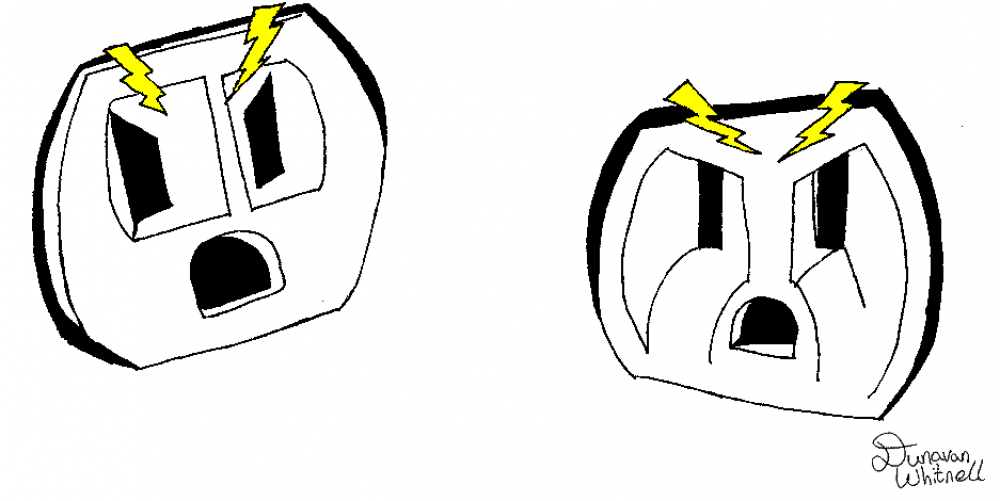







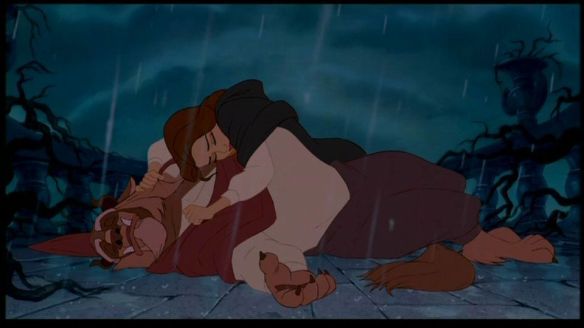




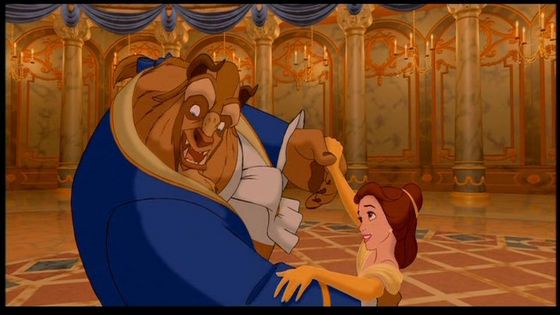


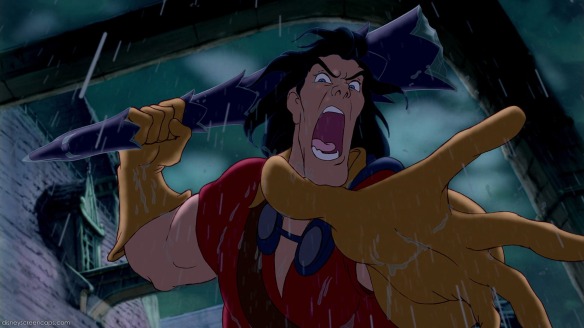
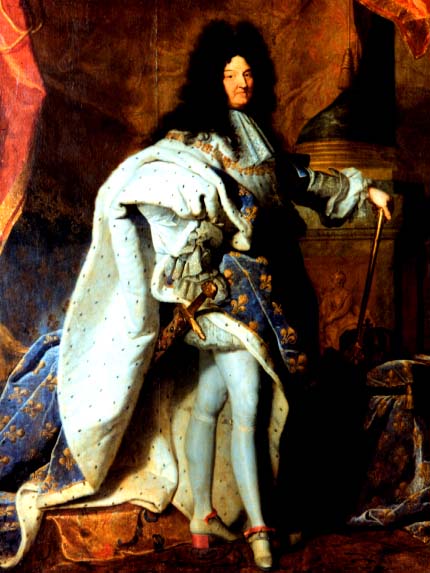

Brilliant! It’s nice to know I’m not the only one who still loves Disney…
(Did Circuit B or C write?? I must know!)
So many good parts, so much hilarious writing, but here’s one great part in particular:
“In fact, that basically typifies all of society’s attitude toward “millennials”. “Why do you think you’re special or worthy of having a dream, ambitions, adventures? What, do you think you’re too good to work for $7 an hour flipping burgers at Pig’n’Grease, just because you have an MA in history and BAs in anthropology and classical languages? Pff, weirdo. Don’t take that unusual job. Don’t write that book. Don’t paint that. Don’t fall in love. Don’t try to fight for anything. Don’t try to get people interested in them derned books you’re always reading. You’re just a hipster!”
Hey, Cassie, thanks for reading! =) This is Circuit C, and, yeah, I wrote the “Defending Disney” series. I just forgot to sign them… I’m really glad you enjoyed the articles! I’ll be doing the next post this evening sometime. Have a good one! =)
Another great post! I have to say, I love how you discuss the animation and relate it to real art pieces, especially here. 🙂 “Beauty and the Beast” is my favorite Disney film and Belle is my favorite Disney Princess. And I love your analysis. I completely agree about “The Phantom of Opera” similarities in “Beauty and the Beast,” both in the Disney film and French film. When POTO became a movie, there’s even a scene that pays homage to “Le Belle et la Bete,” where the Phantom escorts Christine though the candlelight tunnel to his boat. And you’re absolutely right in how this Disney film is more of a love story than previous films. “Tale as old as time.” 🙂
Hey, thanks for reading! =) I’m glad you like the art history portions. I did a BA in art, so that’s a real passion for me. And, I like how animation does work with previous art forms.
I haven’t seen the 2004 Phantom movie for years, but I do remember the La Belle et la Bete homage.
Anyway, thanks for reading! =) (This is my favorite Disney cartoon, too.)
-C